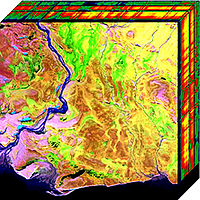
Photo from wikipedia
In this paper, we present a novel method to test the Einstein's Equivalence Principle (EEP) using (simultaneous) multi-wavelength radio observations of polarized blazars. We analyze simultaneous multi-wavelength polarization observations of… Click to show full abstract
In this paper, we present a novel method to test the Einstein's Equivalence Principle (EEP) using (simultaneous) multi-wavelength radio observations of polarized blazars. We analyze simultaneous multi-wavelength polarization observations of 3C 279 at 22, 43, and 86 GHz obtained by two antennas of the Korean VLBI Network. We obtained 15 groups of polarization data, and applied the Metropolis-Hastings Markov Chain (MHMC) to simulate the parameters when considering the EEP effect and the simplest form of Faraday rotation (single external Faraday screen). The final results show the constraint of the parameterized post-Newtonian (PPN) parameter $\gamma$ discrepancy as $\Delta \gamma_{p} = (1.91\pm0.34)\times10^{-20}$. However, the single external Faraday screen is an oversimplification for blazars because there are numerous observations show complex Faraday rotation behavior for blazars due to internal/external Faraday dispersion, beam depolarization, etc. The value $\Delta \gamma_{p}$ results of this paper can only be considered as upper limits. Only if all other effects are revealed and considered, should the result be taken as a direct measurement of the violation of the EEP.
Journal Title: Monthly Notices of the Royal Astronomical Society
Year Published: 2020
Link to full text (if available)
Share on Social Media: Sign Up to like & get
recommendations!